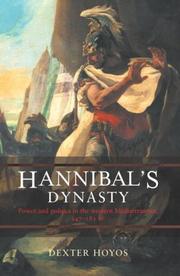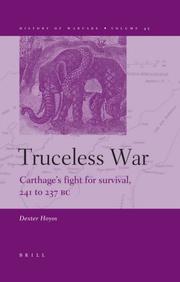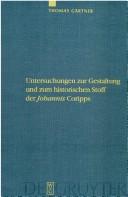| Listing 1 - 10 of 21 | << page >> |
Sort by
|
Book
Year: 2005 Publisher: [Place of publication not identified] : Groupe Ebooks Libres et Gratuits,
Abstract | Keywords | Export | Availability | Bookmark
 Loading...
Loading...Choose an application
- Reference Manager
- EndNote
- RefWorks (Direct export to RefWorks)
This work has been selected by scholars as being culturally important, and is part of the knowledge base of civilization as we know it. This work was reproduced from the original artifact, and remains as true to the original work as possible. Therefore, you will see the original copyright references, library stamps (as most of these works have been housed in our most important libraries around the world), and other notations in the work. This work is in the public domain in the United States of America, and possibly other nations. Within the United States, you may freely copy and distribute this work, as no entity (individual or corporate) has a copyright on the body of the work. As a reproduction of a historical artifact, this work may contain missing or blurred pages, poor pictures, errant marks, etc. Scholars believe, and we concur, that this work is important enough to be preserved, reproduced, and made generally available to the public. We appreciate your support of the preservation process, and thank you for being an important part of keeping this knowledge alive and relevant.
Book
Year: 1997 Publisher: Stuttgart : Franz Steiner Verlag,
Abstract | Keywords | Export | Availability | Bookmark
 Loading...
Loading...Choose an application
- Reference Manager
- EndNote
- RefWorks (Direct export to RefWorks)
Carthage (Extinct city) --- Carthage (Extinct city) --- Rome --- Civilization. --- Relations --- Civilization.
Book
ISBN: 9789088903113 9088903115 9789088903526 9088903522 Year: 2015 Publisher: Leiden, [Netherlands] : Sidestone Press,
Abstract | Keywords | Export | Availability | Bookmark
 Loading...
Loading...Choose an application
- Reference Manager
- EndNote
- RefWorks (Direct export to RefWorks)
Exhibitions --- Excavations (Archaeology) --- Carthage (Extinct city). --- Fouilles (Archéologie) --- Carthage (Extinct city) --- Carthage (Ville ancienne) --- History.
Book
ISBN: 1785706837 1785706810 Year: 2020 Publisher: Oxford ; Philadelphia : Oxbow Books,
Abstract | Keywords | Export | Availability | Bookmark
 Loading...
Loading...Choose an application
- Reference Manager
- EndNote
- RefWorks (Direct export to RefWorks)
"This volume charts the radical transformation of an inner city neighbourhood in Late Antique Carthage which was excavated over a five-year period by a team from the University of Cambridge. Bordering the main thoroughfare leading from the Byrsa Hill to the ports, the neighbourhood remained primarily a residential one from the second century until 530s AD when a substantial basilica was constructed over the eastern half of the insula. Further extensive modifications were made to the basilica half a century later when the structures on the western half of the insula were demolished and the basilica greatly enlarged with the addition of new east-west aisles, a large monumental baptistery and a crypt. By carefully reconstructing the complex architectural plan of this innovative building, this study shows how the remodelled Bir Messaouda basilica was transformed into a major pilgrimage centre; overturning established tradition that located such complexes outside the city walls. The Bir Messaouda basilica provides important insights into the transition between Vandal and Byzantine control of the city, the development of a new Christian intermural urban landscape in the sixth century AD, and the significance of the pilgrimage in reinforcing ecclesiastical authority in post-Justinianic North Africa." --
Excavations (Archaeology) --- Carthage (Extinct city) --- Tunisia --- Buildings, structures, etc.
Book
ISBN: 1842176749 Year: 2011 Publisher: Oxford, U.K. : Oxbow Books, for the Department of Classical, Near Eastern and Religious Studies, University of British Columbia,
Abstract | Keywords | Export | Availability | Bookmark
 Loading...
Loading...Choose an application
- Reference Manager
- EndNote
- RefWorks (Direct export to RefWorks)
Adorning the north-west staircase in the British Museum is a group of brightly coloured figured mosaic pavements. Most were excavated for the Museum between 1856 and 1859 at Carthage, in what is now Tunisia, by a dilettante called Nathan Davis; the work was funded by the Foreign Office of the British Government. This book recounts for the first time the extraordinary story behind this pioneering enterprise and the political and cultural rivalry between representatives of the colonial powers as they asserted their rights to explore the buried remains of one of the ancient world's greatest citie
Excavations (Archaeology) --- Punic antiquities. --- Romans --- Pavements, Mosaic --- Davis, N. --- Carthage (Extinct city) --- Tunisia --- Antiquities, Roman.

ISBN: 1134424655 0203417828 1280071575 0415359589 041529911X 9780415299114 1134424663 9780203417829 0203419294 9780415359580 Year: 2003 Publisher: London New York Routledge
Abstract | Keywords | Export | Availability | Bookmark
 Loading...
Loading...Choose an application
- Reference Manager
- EndNote
- RefWorks (Direct export to RefWorks)
Annotation
Hannibal, --- ʼAnibāl, --- Annibal, --- Annibale, --- Annibas, --- Gannibal, --- Ḥanibaʻal, --- Hanībaʻl, --- חניבעל, --- هنيبال --- Rome --- Carthage (Extinct city) --- Carthage (Ancient city) --- Carthago (Extinct city) --- Kart Hadasht (Extinct city) --- Qarțājannah (Extinct city) --- Tunisia --- History --- Antiquities --- Politics and government --- Foreign relations --- Krijgshandelingen. --- Politiek. --- Hannibal. --- Barkiden (Familie). --- Carthage (Extinct city). --- Hannibal --- Republic, 265-30 B.C. --- Hannibal, - 247-182 B.C. --- Carthage (Extinct city) - History --- Carthage (Extinct city) - Politics and government --- Carthage (Extinct city) - Foreign relations --- هيني بال

ISSN: 13857827 ISBN: 1281936170 9786611936174 9047421922 9789047421924 9789004160767 9004160760 Year: 2007 Volume: v. 45 Publisher: Leiden Boston Brill
Abstract | Keywords | Export | Availability | Bookmark
 Loading...
Loading...Choose an application
- Reference Manager
- EndNote
- RefWorks (Direct export to RefWorks)
The revolt of Carthage’s mercenaries and oppressed Libyan subjects in 241–237 BC nearly ended her power and even existence. This ‘truceless’ war, unrivalled for its savagery, was fought over most of Punic North Africa and spread to Sardinia. It brought to power in Carthage Hamilcar Barca, father of Hannibal, whose generalship—though flawed—was critical to Carthage’s final victory. The main narrative, by the Greek historian Polybius a century later, is vividly evocative (inspiring Flaubert’s novel Salammbô ) yet repeatedly unclear on military and geographical details, the extent and structure of the rebel coalition, and chronology. Truceless War analyses Polybius and other sources to present a coherent and absorbing study of the war’s causes and events, and of Polybius’ historiographical methods.
Oorlogen. --- Carthago. --- Carthage (Extinct city) --- History. --- Carthage (Ancient city) --- Carthago (Extinct city) --- Kart Hadasht (Extinct city) --- Qarțājannah (Extinct city) --- Tunisia --- History, Military. --- Antiquities

ISBN: 9783110201079 3110201070 9786611993443 1281993441 311021007X 9783110210071 Year: 2008 Volume: 90 Publisher: Berlin De Gruyter
Abstract | Keywords | Export | Availability | Bookmark
 Loading...
Loading...Choose an application
- Reference Manager
- EndNote
- RefWorks (Direct export to RefWorks)
Thomas Gärtner befasst sich mit der Johannis, dem großen Feldherrnepos des bedeutenden spätantiken Dichters Coripp. Die Johannis ist dem Wirken des Feldherrn Johannes Troglita gewidmet, dem unter Kaiser Justinian I. im Jahre 548 n. Chr. die Rückeroberung und Befriedung Nordafrikas gelang. Die vorliegende Untersuchung besitzt ein doppeltes Erkenntnisziel: Zum einen wird Coripps Verarbeitung historischer Quellen beleuchtet, insbesondere sein Rückgriff auf die Geschichtsschreibung Prokops. Nicht minder wichtig ist die systematische literaturgeschichtliche Verortung von Coripps Werk in der Tradition der lateinischen Dichtung. Dieses Anliegen verfolgt Thomas Gärtner, indem er literarische Eigenschaften der Johannis einer gattungsspezifischen Analyse unterzieht. Neben der Bestimmung der Makrostruktur des Werks liegt ein besonderes Augenmerk schließlich auf der in der Coripp-Forschung vielfach vernachlässigten Analyse der Mikrostruktur des Abhängigkeitsverhältnisses zwischen Coripp und seinen antiken literarischen Vorbildern.
Corippus, Flavius Cresconius. --- Carthage (Extinct city) --- History. --- Carthage (Extinct city) -- History. --- Corippus, Flavius Cresconius. Johannis. --- Greek & Latin Languages & Literatures --- Languages & Literatures --- Coripp. --- Corippus. --- Johannes Troglita. --- Johannis Troglita. --- Latein /Literatur, Literaturgeschichte. --- Latin /Literature, History of Literature. --- Panegyrics. --- Panegyrik. --- LITERARY CRITICISM / Ancient & Classical.
Book
ISBN: 1597977667 9781597977661 9781597976862 1597976865 Year: 2011 Publisher: Washington, D.C. Potomac Books
Abstract | Keywords | Export | Availability | Bookmark
 Loading...
Loading...Choose an application
- Reference Manager
- EndNote
- RefWorks (Direct export to RefWorks)
The life of Rome's fiercest would-be conquerer
Punic War, 2nd, 218-201 B.C. --- Generals --- Campaigns. --- Hannibal, --- Military leadership. --- Carthage (Extinct city) --- Carthage (Ancient city) --- Carthago (Extinct city) --- Kart Hadasht (Extinct city) --- Qarțājannah (Extinct city) --- Tunisia --- History, Military. --- Antiquities
Book
ISBN: 1108135544 1108131603 110813680X 1107192668 Year: 2018 Publisher: Cambridge : Cambridge University Press,
Abstract | Keywords | Export | Availability | Bookmark
 Loading...
Loading...Choose an application
- Reference Manager
- EndNote
- RefWorks (Direct export to RefWorks)
Playful, popular visions of Troy and Carthage, backdrops to the Iliad and Aeneid's epic narratives, shine the spotlight on antiquity's starring role in nineteenth-century culture. This is the story of how these ruined cities inspired bold reconstructions of the Trojan War and its aftermath, how archaeological discoveries in the Troad and North Africa sparked dramatic debates, and how their ruins were exploited to conceptualise problematic relationships between past, present and future. Rachel Bryant Davies breaks new ground in the afterlife of classical antiquity by revealing more complex and less constrained interaction with classical knowledge across a broader social spectrum than yet understood, drawing upon methodological developments from disciplines such as history of science and theatre history in order to do so. She also develops a thorough critical framework for understanding classical burlesque and engages in in-depth analysis of a toy-theatre production.
English literature --- Trojan War --- Civilization, Classical --- History and criticism. --- Literature and the war. --- Classical influences. --- Troy (Extinct city) --- Carthage (Extinct city) --- Carthage (Ancient city) --- Carthago (Extinct city) --- Kart Hadasht (Extinct city) --- Qarțājannah (Extinct city) --- Tunisia --- In literature. --- Antiquities
| Listing 1 - 10 of 21 | << page >> |
Sort by
|

 Search
Search Feedback
Feedback About UniCat
About UniCat  Help
Help News
News